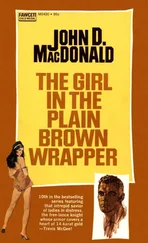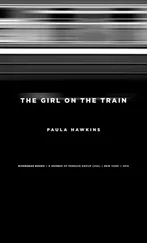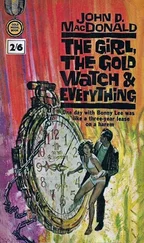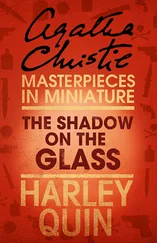"Not exactly. When I left the East Coast he took me to the train station. It was the last I ever saw him. We were standing on the platform, waiting for the train to pull in, and I asked him about the ghost, 'cause, you know, it had never been resolved. Here's what his last words were to me before I got on board: 'The girl in the glass? She was always there, my friend. I just never had a good enough reason to notice her before.'"
"What was the reason?" I asked.
"I think it was you," he said. "I think it was you."
I sat in silence for a long time, stunned by the implications of Antony's theory, until I finally blurted out, "You mean he conned us?"
The big man wheezed with laughter and nodded. "He didn't want you to follow in his footsteps. He wanted something better for you. But he knew you wouldn't get it simply because he told you. So he mixed things up. The girl in the glass was the grain of sand in the oyster, the wrench in the gearworks, the mutation compounded over time, as he used to say about the spots on those fucking butterflies of his.
"Oh, I'm not sayin' he knew anything about Charlotte Barnes's murder before we all did. I think he must've made up the story about seeing the ghost of a little girl, just to toss the dice, and then BAM! Five days later…"
"He almost got us all killed," I said, smiling.
"Yeah, tell me that wouldn't have been a bitch. Sometimes, though, kid, you gotta do what you gotta do. That's the long and short of it."
By now the sun had nearly set; a sliver of orange stretched across the deep purple horizon before winking out. I didn't talk for a while but stared off into the twilight, trying to rekindle faded memories of the whole affair.
"Look, Diego, it's just a theory. No need to get morose. I'm half senile as it is."
All through the day Marta had been replenishing our beers. And although I hadn't had a cigarette in years, I smoked close to a pack that day. I stopped drinking at around eight o'clock and didn't leave till after midnight. By the time I got up to go, Antony had fallen asleep in his chair. I wrote out my address and phone number on an empty matchbook and gave it to Marta, telling her if he ever needed anything to call me. She promised me she would.
Before the year was out, Marta called me in Mexico. Antony had died suddenly, quietly, while sitting in his chair, overlooking the valley. I caught a flight, rented a car, and once again found myself lost in the hills. By the time I found the little funeral parlor where the wake was being held, the viewing hours were just about over. I jumped out of my car and ran up the steps. The last of the mourners were leaving, save one old man who sat, head bowed, in the last row of seats in the small room.
I stepped up to the large coffin and gave myself over to memories of my youth with Antony and Schell-the cons, the marks, the tricks. He lay there like he was carved from limestone, big and powerful even in death. Eventually, I touched his shoulder and said, "Okay, Antony," but before I turned away, I noticed something lying on the dark green satin liner, tucked in the corner to the right of his head. I leaned over and saw it was a playing card, turned facedown. My hand trembled as I reached for it. Flipping it over, I discovered the ace of hearts.
A sudden strong breeze, as if someone had thrown open a door, startled me, and I turned to see who was there, but the door was closed and the place was empty. That's when I noticed it fluttering above the center aisle, a simple pine white, like some ghost of a memory come to life.
Whenever a writer delivers to his readers a novel that is set in a distinct historical period, as The Girl in the Glass is set in 1932 America, there is usually a good measure of research that has gone into the effort. Please keep in mind that I don't claim to be an historian. In other words, I never let the facts get in the way of following the fiction where it demands to go, but, that said, I did delve into many sources in the course of writing this book. I list some of them below, not to act the scholar, but I believe readers might be discovering one or two of the historical actualities presented herein for the first time and will want to investigate them further on their own.
Anyone interested in the concept of spiritualism as a con would do well to read the work of James Randi, internationally renowned magician and escape artist. He has a long list of very fine titles and is an engaging writer who rarely fails to amaze with his insight as to how less-than-reputable practitioners of the supernatural dupe their customers. The particular work of his I found most useful on this subject was Flim-Flam: Psychics, ESP, Unicorns, and Other Delusions. In addition to Randi, one can turn to the writings of the great Houdini himself, who penned a number of books, some of which remain in print, that dissect spiritualist techniques.
Before investigating the 1930s, I was unaware of the Mexican Repatriation that went on during that decade in the United States. In the 1920s and earlier many immigrants were welcomed into this country in order to serve as cheap labor for building the railroads and harvesting crops in western and southern states. With the onset of the Great Depression, though, the growing economic problems of the country and those in positions of power responsible for them found a scapegoat in immigrants. Many legal as well as illegal Mexican immigrants, along with children born in the United States, were forcibly deported back to Mexico. For an easily accessible and excellent essay on this subject, seek out Dr. Jorge L. Chinea's "Ethnic Prejudice and Anti-Immigrant Policies in Times of Economic Stress: Mexican Repatriation from the United States, 1929-1939" on the web at
http://www.people.memphis.edu/?kenichls/2602MexRepatriation.html Jeffrey Ford The Girl in the Glass For Jack, with all my love and respect. It's your move. A MEDIUM TO TRUTH Some days ago I sat by the window in my room, counting the number of sedative pills I've palmed over the course of the last three months. Even though my fingers tremble, I've discovered that the erratic action can be a boon to tricks involving sleight of hand. In the midst of my tabulation, I happened to look outside at the beautiful summer day. A breeze was blowing through the trees that bordered the small courtyard, and their silver-backed leaves flashed in the sunlight. It was then that I noticed a bright yellow butterfly flutter past and come to rest on the head of the weathered concrete Virgin that sits amid the colorful zinnias that nurse Carmen had planted in the spring. The orange dot on its lower wings told me it was an alfalfa, Colias eurytheme . The sight of this beautiful creature immediately reminded me of my benefactor and surrogate father, Thomas Schell, and I was swept back to my youth, far away in another country. I sat that day for hours, contemplating a series of events that took place sixty-seven years ago, in 1932, when I was seventeen. Decades have since died and been laid to rest, not to mention loved ones and personal dreams, but still that distant time materializes before me like a restless spirit at a sйance, insisting its story be told. Of course, now with pen in hand, I have no choice but to be a medium to its truths. All I ask is that you believe.
.
For further reading, one can turn to the book Decade of Betrayal: Mexican Repatriation in the 1930's, by Francisco E. Balderramma and Raymond Rodriguez.
As someone who grew up on Long Island during the 1950s, 1960s, and 1970s, I was incredulous to discover the extent of influence the Ku Klux Klan once had in the area. During the 1920s it is estimated that one out of every seven people had some affiliation with the Klan. For a great essay on this phenomenon, seek out David Behrens's "The KKK Flares Up on L.I.," which can be found on the Web as part of a wonderful site constructed by Newsday that deals with many facets of the history of the island. There are also other fascinating articles to be found on this site written by Newsday staff reporters: http://www.newsday.com/community/guide/lihistory/ny-history-hs725a,0,7485380.story Jeffrey Ford The Girl in the Glass For Jack, with all my love and respect. It's your move. A MEDIUM TO TRUTH Some days ago I sat by the window in my room, counting the number of sedative pills I've palmed over the course of the last three months. Even though my fingers tremble, I've discovered that the erratic action can be a boon to tricks involving sleight of hand. In the midst of my tabulation, I happened to look outside at the beautiful summer day. A breeze was blowing through the trees that bordered the small courtyard, and their silver-backed leaves flashed in the sunlight. It was then that I noticed a bright yellow butterfly flutter past and come to rest on the head of the weathered concrete Virgin that sits amid the colorful zinnias that nurse Carmen had planted in the spring. The orange dot on its lower wings told me it was an alfalfa, Colias eurytheme . The sight of this beautiful creature immediately reminded me of my benefactor and surrogate father, Thomas Schell, and I was swept back to my youth, far away in another country. I sat that day for hours, contemplating a series of events that took place sixty-seven years ago, in 1932, when I was seventeen. Decades have since died and been laid to rest, not to mention loved ones and personal dreams, but still that distant time materializes before me like a restless spirit at a sйance, insisting its story be told. Of course, now with pen in hand, I have no choice but to be a medium to its truths. All I ask is that you believe.
.
Читать дальше












